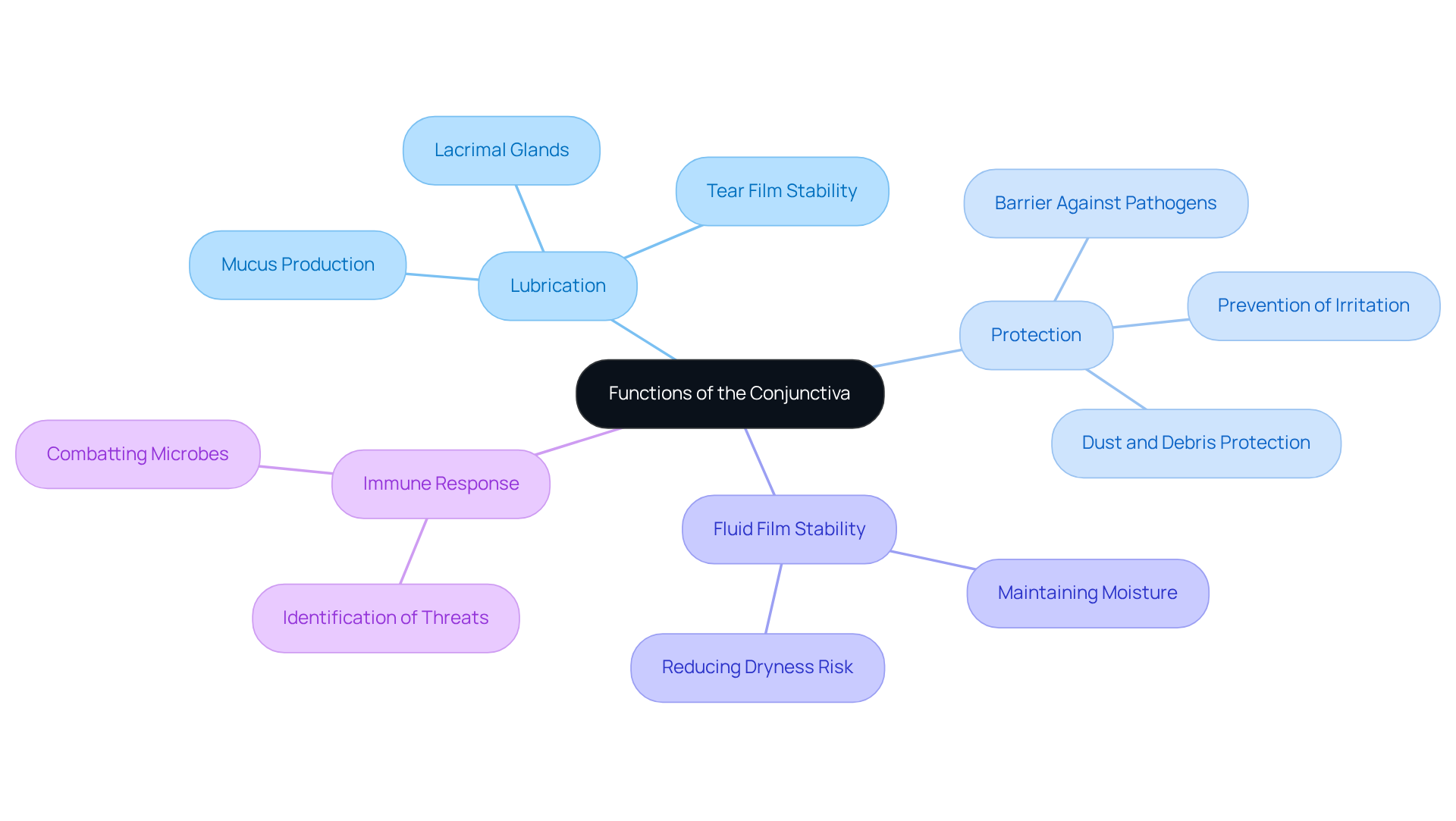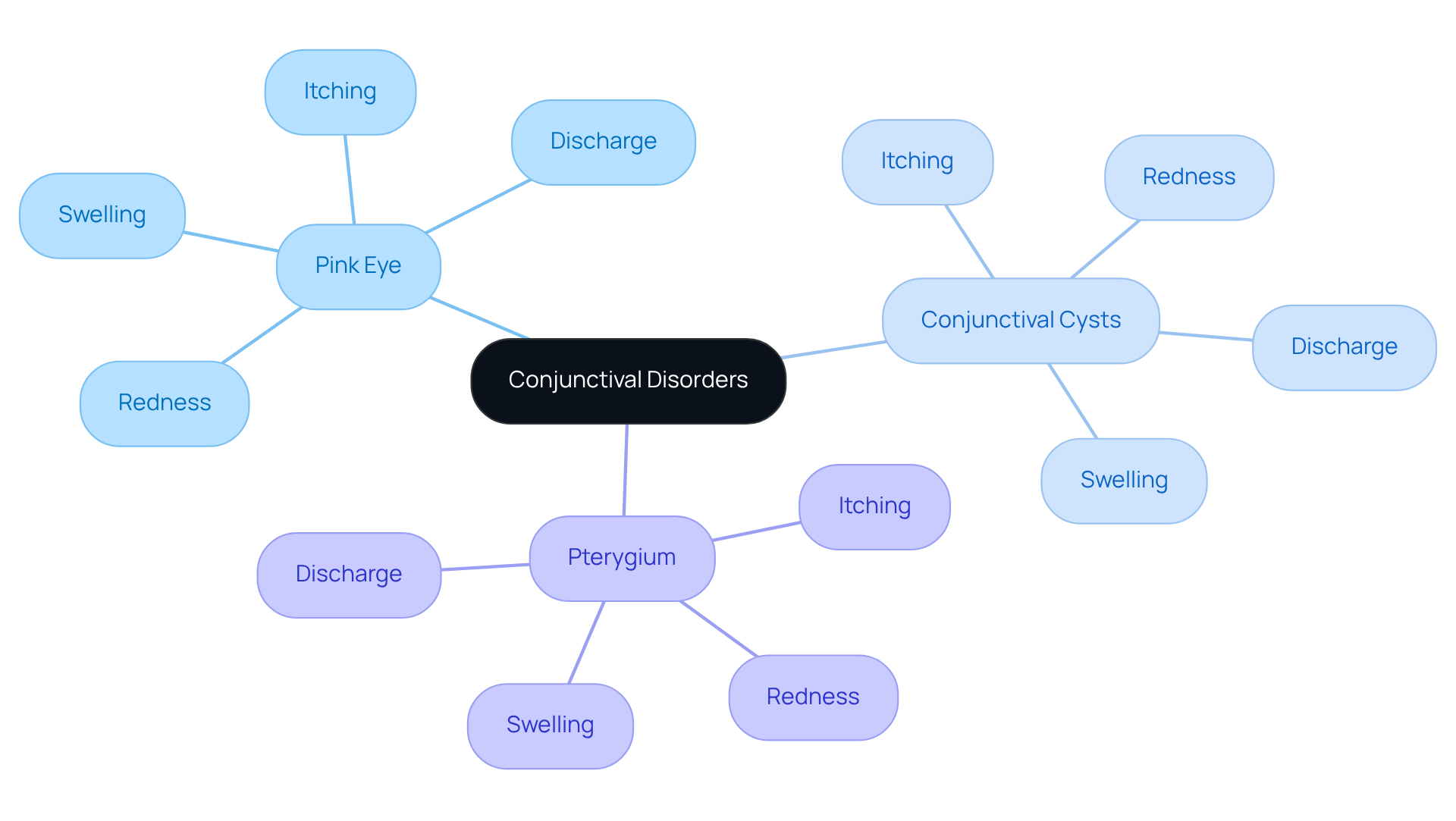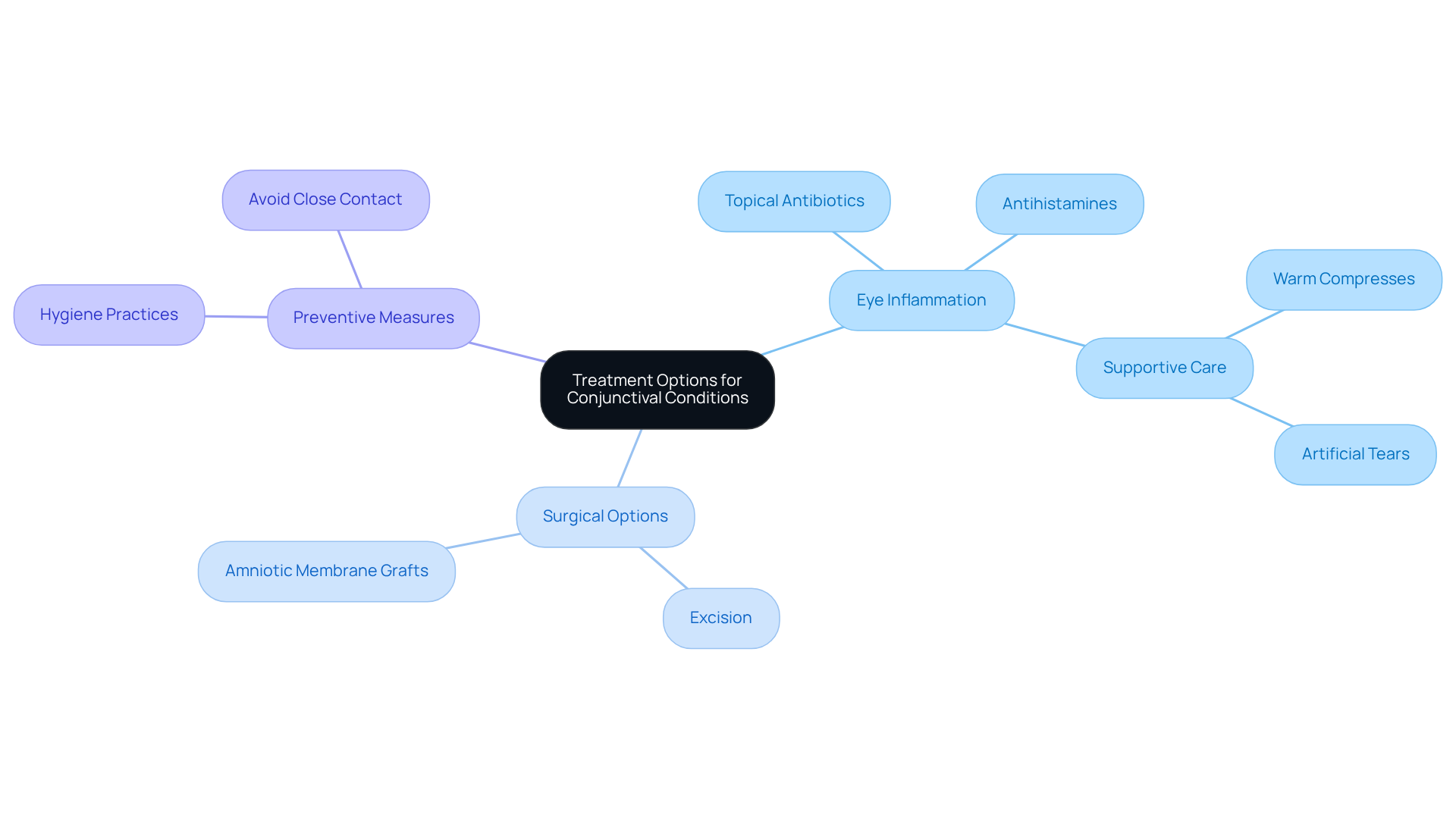Posted by: Northwest Eye in General on November 16, 2025
Introduction
Understanding the important role of the conjunctiva in eye health is crucial for anyone who cares about their vision. This delicate membrane, which covers the inner eyelids and the eyeball, not only provides lubrication and protection but also plays a vital role in immune response and tear film stability.
However, we understand that the prevalence of conjunctival disorders, from pink eye to pterygium, can be concerning. It raises critical questions about how to recognize symptoms early and seek appropriate treatment. It’s common to feel overwhelmed by the complexities of potential disorders.
So, what steps can you take to safeguard your conjunctival health? We are here to help you through this process, ensuring you feel supported and informed.
Explore the Anatomy of the Conjunctiva
We understand that concerns about eye health can be daunting. The thin, transparent conjunctival membrane plays a crucial role in your eye’s well-being. It covers the inner surface of the eyelids (palpebral) and the white part of the eyeball (bulbar), consisting of three main layers:
- The epithelium
- The adenoid layer
- The fibrous layer
The epithelium is non-keratinized and contains goblet cells that produce mucus, which is essential for lubrication. This membrane is richly vascularized, receiving blood supply primarily from the anterior ciliary arteries and the palpebral arches. Understanding this anatomy is vital, especially when it comes to diagnosing issues like conjunctivitis and pterygium, which can affect the integrity and function of the conjunctival membrane of your eye.
It’s common to feel overwhelmed by medical terms, but we’re here to help you through this process. If you have any concerns about your eye health, please don’t hesitate to reach out for support.

Understand the Functions of the Conjunctiva
The membrane plays a crucial role in maintaining your eye health through several essential functions. It lubricates your eye by producing mucus and fluids, which are vital for comfort and clear sight. This lubrication is supported by additional lacrimal glands within the eye membrane, which contribute to the watery component of fluids. However, it’s important to note that the eye membrane generates a lesser amount of fluids compared to the lacrimal gland.
Moreover, the eye’s membrane acts as a protective barrier against foreign objects and pathogens, preventing harmful microorganisms from entering your eye. Its structure allows for smooth eyelid movement over the eyeball, reducing friction and irritation, which can be quite uncomfortable.
The membrane is also essential for fluid film stability, crucial for preserving a healthy eye surface. A stable tear film ensures that your eye remains moist and comfortable, significantly reducing the risk of dryness and irritation. The immune response benefits from the conjunctival contribution, as it helps to identify and combat potential threats to your eye health.
Irritated eyes can stem from various causes, including allergies and infections like pink eye, leading to symptoms such as redness, soreness, and itchiness. We understand that experiencing these symptoms can be concerning. Recognizing the functions of the membrane and being aware of symptoms of conjunctival disorders, such as dryness, redness, or irritation, is vital, especially for cataract patients. These symptoms may indicate underlying issues that require medical attention. Remember, we are here to help you through this process.

Identify Common Conjunctival Disorders and Their Symptoms
Common disorders of the conjunctival area, such as pink eye, conjunctival cysts, and pterygium, can be concerning. We understand that experiencing eye inflammation can be unsettling. Symptoms can vary depending on the cause – whether viral, bacterial, or allergic – but they often include:
- Redness
- Itching
- Discharge
- Swelling
Conjunctival cysts usually present as painless bumps on the conjunctiva, which can be concerning. On the other hand, pterygium may lead to irritation, redness, and even visual disturbances if it grows large enough. It’s common to feel anxious about these symptoms, but recognizing them early can lead to timely intervention and treatment.
Taking action is crucial, as it can significantly reduce the risk of complications. We are here to help you through this process, ensuring you receive the care and support you need.

Explore Treatment Options for Conjunctival Conditions
Treatment for disorders of the conjunctival region is tailored to your specific needs. If you’re dealing with eye inflammation, management strategies often include:
- Topical antibiotics for bacterial infections
- Antihistamines for allergic reactions
- Supportive care measures like warm compresses and artificial tears
We understand how important it is to maintain proper hygiene and avoid close contact with infected individuals to prevent the spread of bacterial eye infections.
In cases where surgical options such as excision may be necessary due to the significant impact of conjunctival cysts or pterygium on your vision. Recent advancements in surgical techniques, including the use of amniotic membrane grafts, are becoming more common for complex cases, helping to improve recovery outcomes. If you suspect a chlamydial infection, consulting with a specialist is a wise step.
Understanding these diverse treatment options is essential, especially if recovery isn’t progressing as expected. Follow-up care plays a crucial role in your journey towards optimal recovery from conjunctival disorders.
It’s worth noting that the market for conjunctival conditions, specifically conjunctivitis, is projected to grow significantly, reaching USD 3,660.0 million by 2035. This reflects the increasing importance of conjunctival health, and we are here to assist you throughout this process.

Conclusion
The conjunctiva is a vital yet often overlooked part of eye health, playing multiple essential roles that contribute to your overall ocular well-being. Its intricate structure, made up of three distinct layers, is crucial for lubrication, protection, and immune response. Understanding the anatomy and functions of the conjunctiva is important for recognizing potential disorders and seeking timely intervention.
In this article, we’ve shared key insights into the anatomy of the conjunctiva, its various functions, common disorders like conjunctivitis and pterygium, and the treatment options available. From producing mucus to prevent dryness to acting as a barrier against pathogens, the conjunctiva is integral to maintaining a healthy eye surface. It’s common to feel concerned when symptoms like redness and irritation arise, but recognizing these early can lead to more effective management of conjunctival disorders.
Ultimately, being aware and taking proactive care of your conjunctival health is paramount. With the projected growth in the market for conjunctival conditions, it’s essential to emphasize the importance of eye health. Seeking professional guidance when symptoms arise can significantly enhance recovery outcomes. Prioritizing conjunctival well-being not only improves comfort but also safeguards your vision. We encourage you to stay informed and vigilant about your eye health, because we are here to help you through this process.
Frequently Asked Questions
What is the conjunctiva and what role does it play in eye health?
The conjunctiva is a thin, transparent membrane that covers the inner surface of the eyelids (palpebral) and the white part of the eyeball (bulbar). It plays a crucial role in eye health by protecting the eye and providing lubrication.
What are the main layers of the conjunctiva?
The conjunctiva consists of three main layers: the epithelium, the adenoid layer, and the fibrous layer.
What is the function of the epithelium in the conjunctiva?
The epithelium is non-keratinized and contains goblet cells that produce mucus, which is essential for lubricating the eye.
How is the conjunctiva supplied with blood?
The conjunctiva is richly vascularized and receives its blood supply primarily from the anterior ciliary arteries and the palpebral arches.
Why is understanding the anatomy of the conjunctiva important?
Understanding the anatomy of the conjunctiva is vital for diagnosing issues such as conjunctivitis and pterygium, which can affect the integrity and function of the conjunctival membrane.
What should I do if I have concerns about my eye health?
If you have any concerns about your eye health, it is recommended to reach out for support and consult a healthcare professional.






